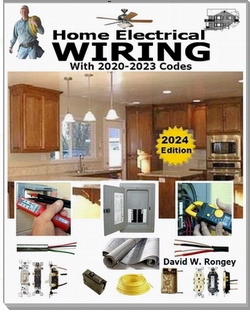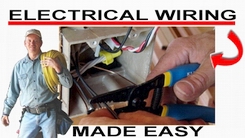» Residential Home Wiring Diagrams
» Need Electrical Help? Ask the Electrician
Inverter Basics
 |
By Dave Rongey
Summary: The electrical power Inverter is used to convert one source of electrical power to another and is the vital link between solar panels or wind generators and the utility power distribution system known as the grid. © By: Dave Rongey |
The Function of an Inverter for Electrical Power Generation
Optimal Efficiency
Inverters are now available with a real efficiency of up to 97.1%. The system efficiency is crucial for maximum power output and accomplished when selecting high quality system components.
Surge Voltage Protection
Inverters should be equipped with thermally monitored varistors on the DC side and is indicated with a LED and have the ability to be supervised with a remote monitoring system.
Reliability
Highest reliability and a lifetime of over 20 years are major aspects taken into account during the design of a quality inverter. The newer inverters should come with a 10 year warranty.
Things to consider when selecting an Inverter
Simplest Installation
DC distribution cases and connection boxes are no longer necessary resulting in reduced installation costs.Connect It Anywhere
The inverter can be connected to any available part of the AC distribution system of the house, and in some cases in an attic or a similar room, depending upon your application and system requirement.Mount It Anywhere
The cases should be NEMA 3R rated, weather resistant and a wide temperature range tolerance enabling the inverter to be mounted nearly anywhere. The inverter should be capable of installation directly on PV modules, on the roof or on the wall of your house. A world-wide usage of the inverter is therefore possible.Diagnosis And Communication
Communicate with your inverter is important. Measurement values and messages should be capable of being transmitted to a PC via wireless or RS485 cable where you can be continuously informed about the situation of your alternative power plant with the option to view statistics of your solar system on the Internet.
The Safest Way to Test Electrical Devices and Identify Electric Wires!The Non-Contact Electrical TesterThis is a testing tool that I have had in my personal electrical tool pouch for years, and is the first test tool I grab to help identify electrical wiring. It is a Non-contact tester that I use to easily Detect Voltage in Cables, Cords, Circuit Breakers, Lighting Fixtures, Switches, Outlets and Wires. Simply insert the end of the tester into an outlet, lamp socket, or hold the end of the tester against the wire you wish to test. Very handy and easy to use.
The Quickest Way to Check for Faulty Electrical Wiring!The Plug-In Outlet TesterThis is the first tool I grab to troubleshoot a problem with outlet circuit wiring. This popular tester is also used by most inspectors to test for power and check the polarity of circuit wiring. It detects probable improper wiring conditions in standard 110-125 VAC outlets Provides 6 probable wiring conditions that are quick and easy to read for ultimate efficiency Lights indicate if wiring is correct and indicator light chart is included Tests standard 3-wire outlets UL Listed Light indicates if wiring is incorrect Very handy and easy to use.
Strip Off Wire Insulation without Nicking and Damaging the Electric Wire!The Wire Stripper and Wire CutterMy absolute favorite wire stripping tool that I have had in my personal electrical tool pouch for years, and this is the tool I use to safely strip electrical wires. This handy tool has multiple uses: The wire gauges are shown on the side of the tool so you know which slot to use for stripping insulation. The end of the tool can be used to grip and bend wire which is handy for attaching wire onto the screw terminals of switches and outlets.. The wire stripper will work on both solid and stranded wire. This tool is Very Handy and Easy to Use. |
||
Residential Electrical Parts and AccessoriesLight Switches 120volt Outlets Circuit Breakers Electrician Tools Voltage Testers |















